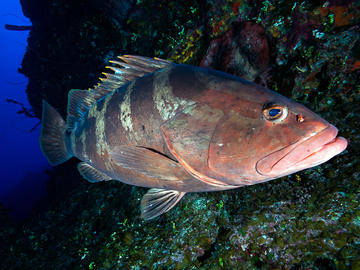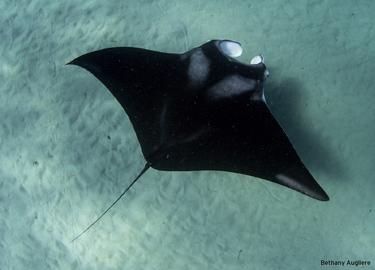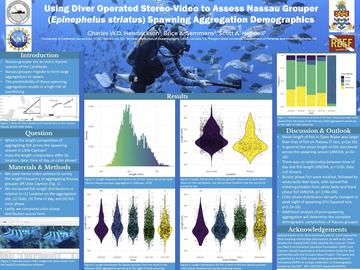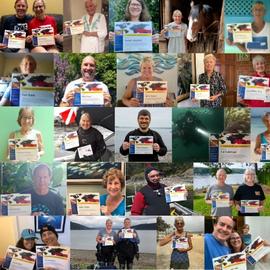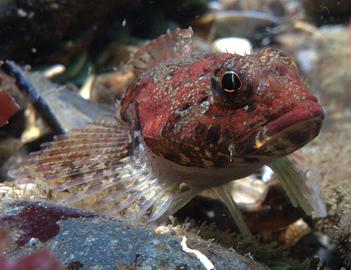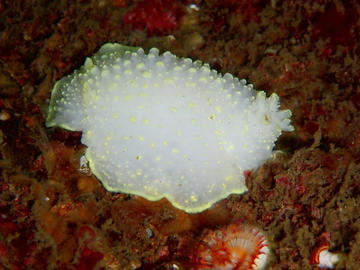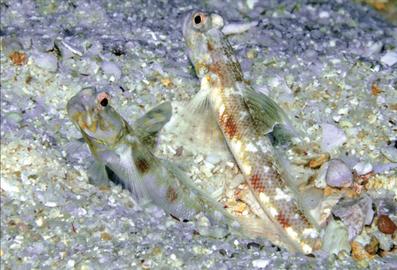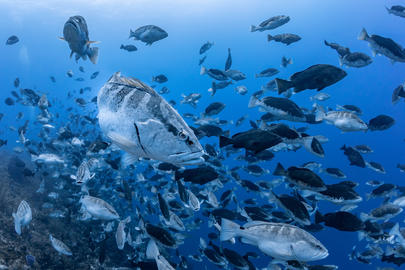A new research paper containing exciting findings from the Grouper Moon Project was recently published in the journal Marine Ecology Progress Series. Much of the science done by the project's collaborative team is focused on better understanding Nassau Grouper populations in the Cayman Islands through studying their spawning aggregations. However, long-term acoustic tags (tracking pingers) also allow us to gather information on how these fish behave at their home reefs outside of the spawning season.
Researchers from the Marine Megafauna Foundation, Jessica Pate and Andrea Marshall, show strong evidence that south Florida features a nursery ground for manta rays, only the third such special place known for the species.
Since the organization's earliest days, a key aspect of REEF's success has been strategic partnerships with academia, government agencies, and other non-profits. REEF has a long history of collaboration with the scientific community, starting in the early 1990s when REEF's founders worked with researchers from University of Miami, NOAA, and The Nature Conservancy to determine the best protocols for the Volunteer Fish Survey Project. There are currently four students from Scripps Institution of Oceanography at UC San Diego who are working with REEF on various data projects.
All data submitted to REEF’s Volunteer Fish Survey Project (VFSP) are housed in a publicly-assessible database that can be queried through a variety of reports on the REEF website. REEF recently partnered with Dr. Ross Robertson at the Smithsonian Tropical Research Institute (STRI) to link the online REEF Species Distribution Reports to species accounts on STRI’s online information systems, “Shorefishes of the Greater Caribbean” and “Shorefishes of the Tropical Eastern Pacific”.
This is testing how the embedding option would work.
As we shared last month, surveyor Mike Snow recently submitted the 250,000th survey to our Volunteer Fish Survey Project database. When we asked him to give us some thoughts on what he likes best about REEF, he shared a story about a time when he was buddied with fellow REEF member Greg Jensen, a marine biologist at the University of Washington and author of several reference books, including one on sculpins. Mike and Greg were part of a REEF Advanced Assessment Team project at Saltwater State Park in Washington.
REEF Citizen Science Program Manager Janna Nichols recently had the honor of having a new species of nudibranch (sea slug) named after her! Cadlina jannanicholsae is part of a difficult-to-distinguish complex of nudibranchs that was previously thought to only include Hudson’s Dorid (Acanthodoris hudsoni) and Yellow Margin Dorid (Cadlina luteomarginata). The complex is monitored by REEF surveyors in the Pacific Northwest.
April is Earth Month, and as we look forward to Earth Day on April 22, you might be looking for ways to stay connected to the environment in these uncertain times. We are all facing new and unfamiliar challenges as we adjust to this rapidly changing situation and navigate disruptions to our daily life. Here are some fun and easy activities you can do from the comfort and safety of your home:
A bucket list item for many REEF surveyors - discovering a new species. And even better, getting a species named after you. This has happened a handful of times over the last couple of decades, and one of our surveyors now has the honor of it happening twice! One of REEF's most prolific surveyors, Janet Eyre, now has a beautiful shrimpgoby named in her honor after discovering the fish on a recent trip to Indonesia.
While everyone knows that marine mammals are well known sound producers, did you know that many fish species also produce and use sound to sense their environment? Marine environments are teeming with underwater sounds from animals, human activities (shipping, costal development, oil and gas exploration etc.), and geological processes such as rain, wind, and water flow. The combination of the sounds, called a soundscape, can be used to study the ecology of animals that produce, hear, or respond to sound.

